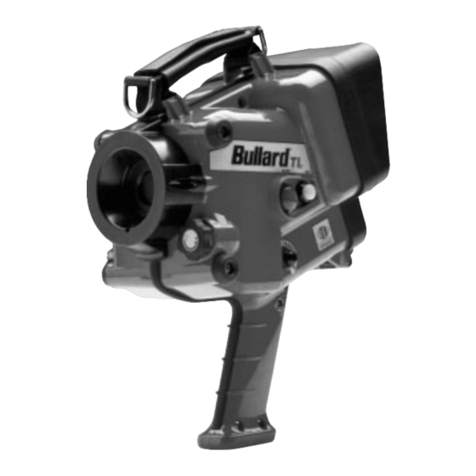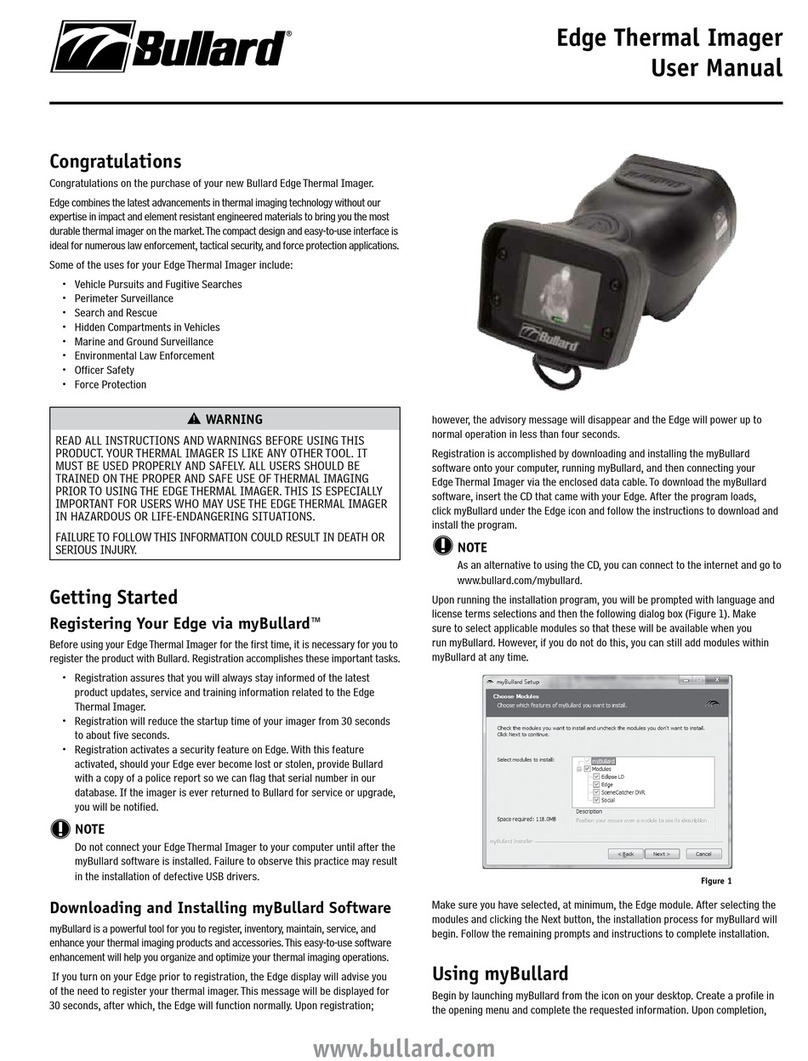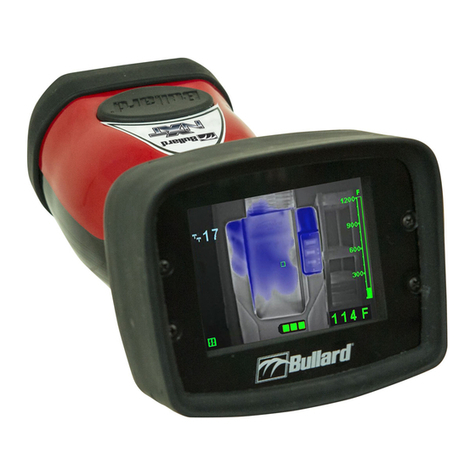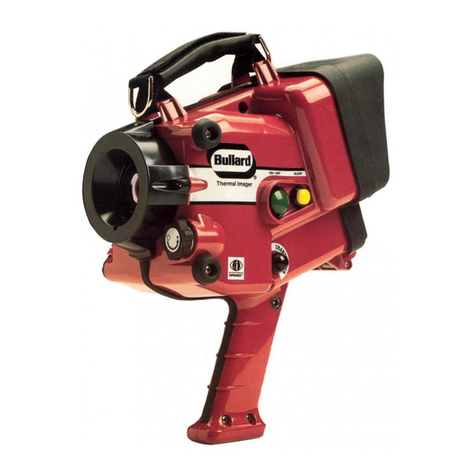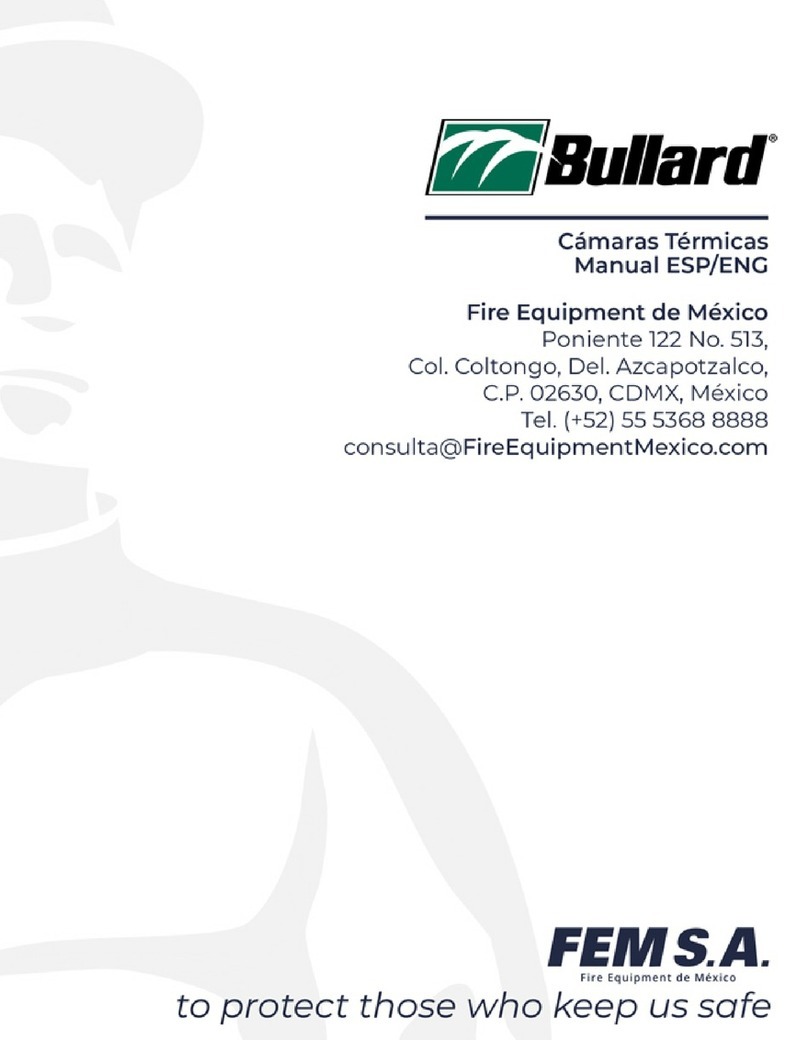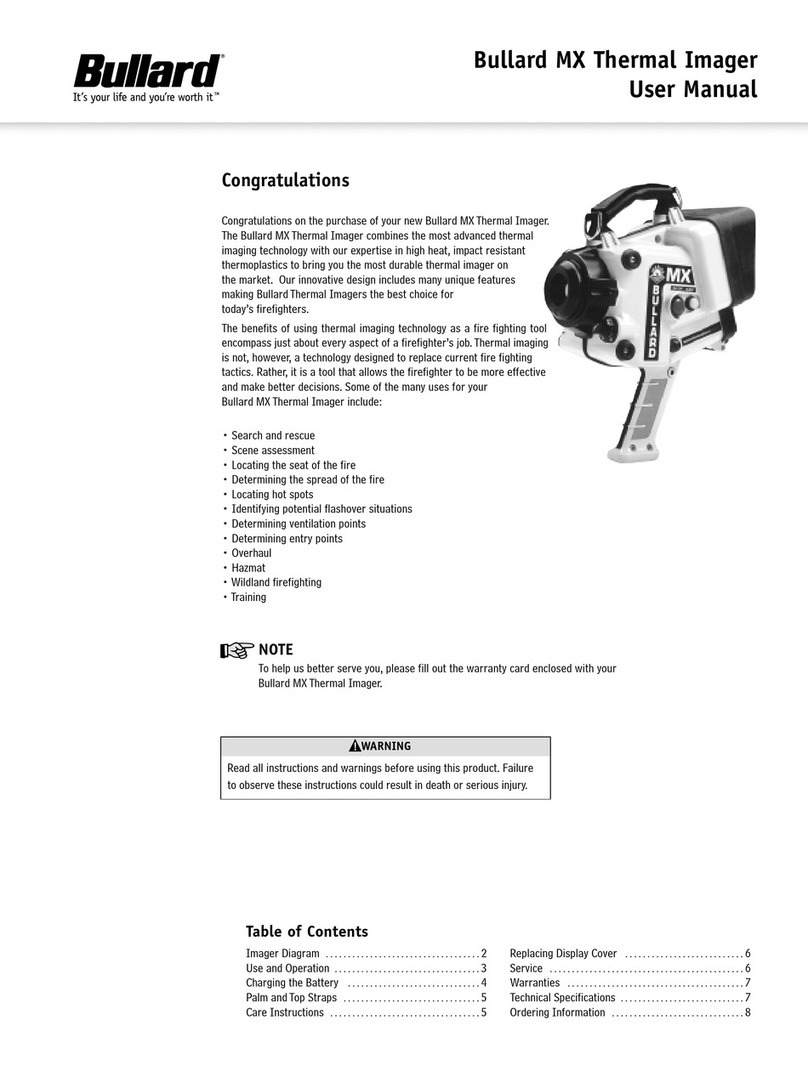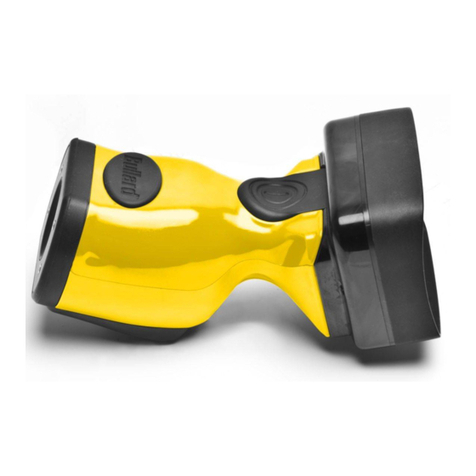
NOTE ON BATTERY CHARGING
1. Connection to a computer via USB is intended for the purpose of
communicating with the imager. Charging with USB may be slow.
2. The battery’s charging temperature range is 32°F (0°C) to +113°F
(+45°C).
3. Power off the imager during charging.
CARE INSTRUCTIONS
The Bullard TXS Thermal Imager requires little maintenance. For best
results, after each use:
• Clean and disinfect the outside of the unit with mild soap or
detergent.
• Wipe the lens with a soft cloth.
• Clean the display with a soft cloth.
NOTE
Spare batteries are best charged before storing.
NOTE
You may place department and/or company information
on your Bullard TXS. When adding stickers or other mark-
ings, ensure that you do not cover the information label,
the thermal imager lens, cover window, or the display. Do
not engrave in the plastic material as this can damage
the unit and jeopardize sealing.
NOTE
As an option, the Bullard TXS may be ordered with
the Bullard XS Charger for installation into a vehicle.
This charger is designed to be mounted in a vehicle and
securely charge and store the imager in accordance
with NFPA. 1901-14.1.11.2. The Bullard XS Charger is
designed for permanent vehicle installation. Consult the
Bullard XS Charger instruction manual for detailed
instructions of installing in a vehicle.
NOTE
The Bullard XS Charger is also designed to be used on a
desktop with an AC power cable that can be ordered as an
option with the charger.
NOTE
The Bullard TXS Thermal Imager is sensitive to intense,
radiant heat sources. Avoid pointing the Bullard TXS
Thermal Imager at the sun or any other source of extreme
radiant heat for long periods, as this could cause damage.
CLEANING THE LENS
The Bullard TXS Thermal Imager lens is recessed in an impact resis-
tant bezel covered with a germanium lens. The lens can be cleaned
with a soft cloth and soapy water as required. The protective window
is designed such that when necessary, it can be easily cleaned in
operation with a cloth or glove.
SHIPMENT
As with all electronics with internal lithium-ion
batteries, special considerations must be observed when
shipping the Bullard TXS.
The Bullard TXS must be shipped according to UN3481 standards.
Additionally, further regulations stipulate that the imager must not
have greater than two bars of battery charge if shipping by air.
TROUBLESHOOTING
If you experience any problems with your TXS, please refer to our
website (www.bullard.com/txs) for the latest information on xes,
updates, and best practices.
If the imager appears unresponsive, it may require a hard power
off. To accomplish this, depress and hold the Power button for 10
seconds. If the hard power off does not solve the issue, removing and
reinserting the battery pack is another way to force a camera reset.
The Bullard TXS is also equipped with a safety feature which provides
automatic shutoff to protect the electronics if they experience pro-
longed excessive temperatures.
SERVICE
If your Bullard TXS is not performing properly and you have tried the
troubleshooting section on www.bullard.com/txs, contact Bullard
Customer Service at 877-BULLARD (285-5273) or at info@bullard.
com. Outside the US and Canada, call +1-859-234-6611. Describe
the problem to the Bullard representative as completely as possible.
For your convenience, your representative will attempt to help you
diagnose or correct the problem over the phone.
Before returning your Bullard TXS, you should verify with your repre-
sentative that the product should be returned to Bullard. Bullard Cus-
tomer Service will provide you with written permission and a Return
Authorization (RA) number.
www.bullard.com/txs
BULLARD TXS™
THERMAL IMAGER
INSTRUCTION MANUAL
BULLARD TXS™
THERMAL IMAGER
INSTRUCTION MANUAL
